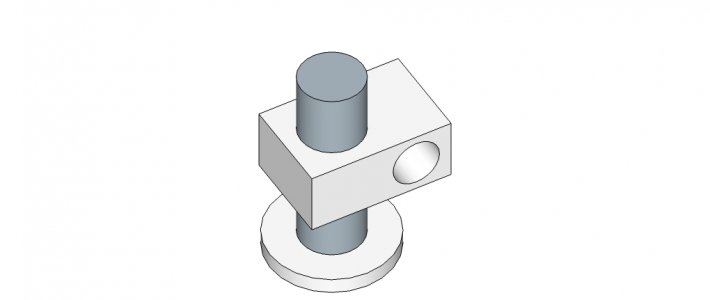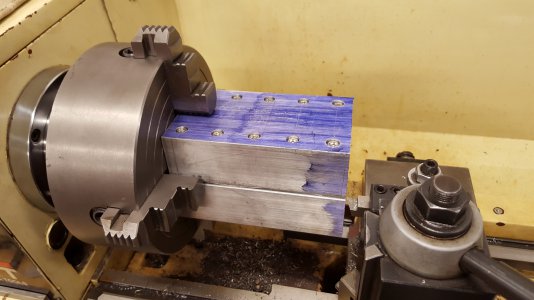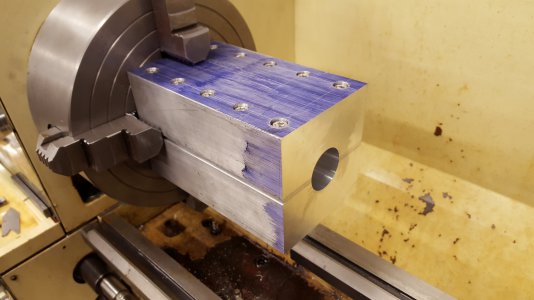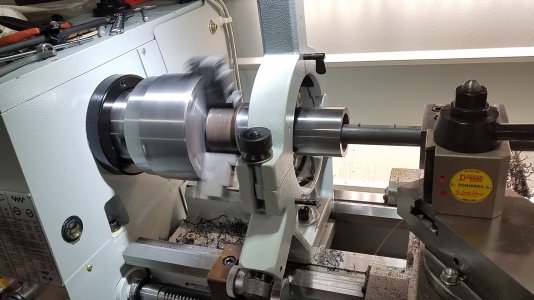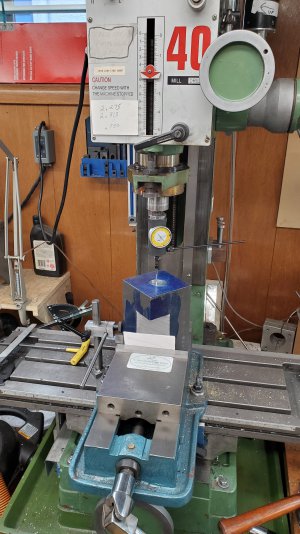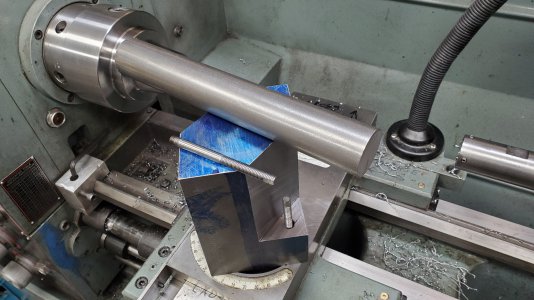- Joined
- Oct 28, 2020
- Messages
- 528
Setting up for deep ,deep boring (Moved from what did you do in your shop today)
To day in the shop I started to set up for some deep boring.
I have a job that calls for 6" long bushings. I will use 2 1/2" heavy wall pipe, the od gets turned and the id gets bored , I would like to hold +-.0015 on the bore. Boring 6" deep on my 14/40 lathe is a challenge. I've decide to do away with the top slide and instead mount a piece of 4" x 4" mild steel I have had kicking around for years. I intend to use a piece of 1 1/2" 1045 as the boring bar. I'm thinking I will use 3/8" square hss for the cutting tool. I think the hardest part of the build will be figuring out how to run the hold down bolts thru the 4 x 4. In the pic below I have the bottom of the 4 x 4 bored for the registration nub on the cross slide. Thoughts?
Wish me luck.
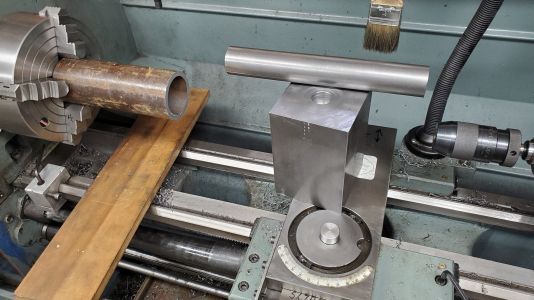
I decided to wack some of the corner off to facilitate drilling the mounting holes, the block is a little over 5" tall. I used a number of sketchy setups with my table mounted porta-band and a regular(ish) horizontal band saw.
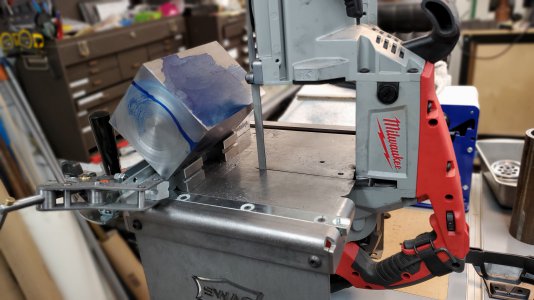
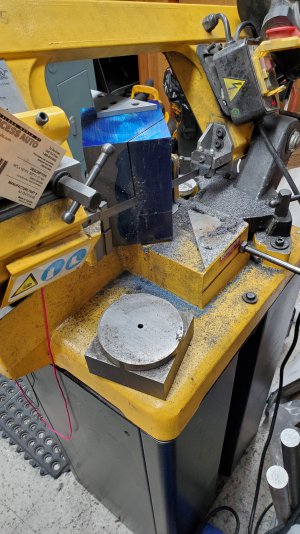
Matthemuppet mentioned it would be nice to use inserts, which i would love to do especially since there is no provision for adjusting the height of the boring bar. The thought of laying out and milling a pocket for an insert seems very daunting to me for some reason.
To day in the shop I started to set up for some deep boring.
I have a job that calls for 6" long bushings. I will use 2 1/2" heavy wall pipe, the od gets turned and the id gets bored , I would like to hold +-.0015 on the bore. Boring 6" deep on my 14/40 lathe is a challenge. I've decide to do away with the top slide and instead mount a piece of 4" x 4" mild steel I have had kicking around for years. I intend to use a piece of 1 1/2" 1045 as the boring bar. I'm thinking I will use 3/8" square hss for the cutting tool. I think the hardest part of the build will be figuring out how to run the hold down bolts thru the 4 x 4. In the pic below I have the bottom of the 4 x 4 bored for the registration nub on the cross slide. Thoughts?
Wish me luck.

I decided to wack some of the corner off to facilitate drilling the mounting holes, the block is a little over 5" tall. I used a number of sketchy setups with my table mounted porta-band and a regular(ish) horizontal band saw.


Matthemuppet mentioned it would be nice to use inserts, which i would love to do especially since there is no provision for adjusting the height of the boring bar. The thought of laying out and milling a pocket for an insert seems very daunting to me for some reason.
Last edited:


